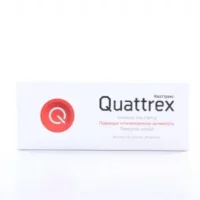Description
Piracetam (Piracetam) Ampoules 20% 5 ml. №10
Ingredients
- Each 5 ml ampoule contains 20% Piracetam (Piracetam) as the active ingredient.
Dosage
- The recommended dosage is determined by a healthcare professional based on individual needs.
Indications
- Piracetam (Piracetam) is indicated for cognitive enhancement and neurological disorders.
Contraindications
- Do not use Piracetam (Piracetam) if allergic to any of the ingredients or if you have severe renal impairment.
Directions
- Administer Piracetam (Piracetam) via intravenous injection as directed by a healthcare provider.
Scientific Evidence
Piracetam (Piracetam) is a nootropic agent known for its cognitive-enhancing properties. It is believed to modulate neurotransmission and improve brain function. Several studies have shown its efficacy in enhancing memory, learning, and cognitive performance.
Additional Information
- It is essential to follow the prescribed dosage of Piracetam (Piracetam) to avoid adverse effects.
- Research has demonstrated the positive effects of Piracetam (Piracetam) in conditions such as dementia, stroke recovery, and dyslexia.
- Its neuroprotective and neuroenhancing properties make it a valuable option in the management of cognitive disorders.





